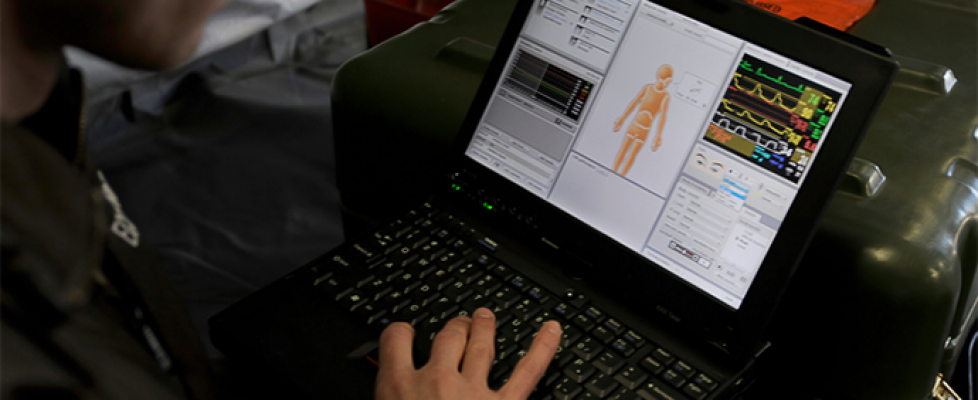CMS Code Gives Docs a Chance to Use Store-and-Forward Telehealth
Beginning next year, CMS will reimburse providers using store-and-forward telehealth (also known as asynchronous telehealth) to analyze and diagnose images sent to them from established patients.
– Healthcare providers looking for new ways to implement telehealth and telemedicine are getting a Christmas present from the Centers for Medicare & Medicaid Services: a new code for asynchronous (store-and-forward) telehealth services.
Tucked neatly into the 2019 Physicians Fee Schedule and Quality Payment Program unveiled last month, HCPCS Code G2010 covers “Remote Evaluation of Pre-Recorded Patient Information.” The code, which goes into effect next year, gives providers some reimbursement for analyzing images submitted by an established patient and sending back a timely diagnosis.
As written, G2010 covers “remote evaluation of recorded video and/or images submitted by an established patient (e.g., store and forward), including interpretation with follow-up with the patient within 24 business hours, not originating from a related E/M service provided within the previous 7 days nor leading to an E/M service or procedure within the next 24 hours or soonest available appointment).”
The code is a step forward for acceptance of store-and-forward telehealth services, which revolve primarily around image viewing and diagnosis. Some health systems have adopted the connected health platform for direct-to-consumer telehealth for non-acute health issues, enabling consumers to fill out on online, e-mail or phone questionnaire, which a provider then reviews and responds with a diagnosis within a certain time period.
“It’s worthy to note that many industry advocates supported coverage of this code for new patients, particularly in dermatology and ophthalmology,” Nathaniel Lacktman, a partner and healthcare lawyer with Foley & Lardner who chairs the firm’s Telemedicine Industry Team and co-chairs its Digital Health Work Group, said in a recent blog. “This service could also be valuable in urology, as it would provide a way to assess new patients with conditions such as hematuria (blood in the urine) in a timely manner.”
The code is one of several tucked within the 2,378-page PFS/QPP document signaling increasing government acceptance of telehealth and mHealth capabilities. Along with expanded reimbursement for remote patient monitoring services, CMS also created new opportunities for providers to use telehealth for virtual patient check-ins.
As an added incentive, CMS separated these and the G2010 from its telehealth guidelines, enabling providers to avoid restrictions based on geography and originating sites.
The new code does have its limitations, though.
Lacktman points out that the asynchronous service can only be used on established patients. He noted the American Medical Association had lobbied for that condition, saying physicians should first establish a doctor-patient relationship through a real-time, face-to-face examination (either in person or via virtual care).
In addition, Lacktman noted the new code covers telemedicine technologies that involve pre-recorded, patient-generated still or video images submitted by the patient, not data derived from a questionnaire or survey.
“CMS rejected proposals to include, within the scope of this code, email/messaging or questionnaires/assessments that do not include an image or other visual item,” he wrote. “Other types of patient-generated information, such as information from heart rate monitors or other devices that collect patient health marker data, would not be within the scope of G2010, but could potentially qualify as remote patient monitoring.”
According to CMS, once the provider receives these images, he/she has 24 hours to review them and respond. That response doesn’t have to be asynchronous, but can be delivered by e-mail, phone call, virtual visit, text message or through the patient portal.
As with coding for virtual patient check-ins, the new code is a Medicare Part B service that includes a co-payment. It also requires patient consent, either verbal or written, with electronic confirmation noted in the patient’s medical record each time the service is used. And delivery of the service is limited to physicians or qualified healthcare professionals.
In addition, there are no frequency limitations to using the code beyond the traditional mantra that the service “must be medically reasonable and necessary to be reimbursed.” But there are timeframe limitations, as noted by Lacktman:
- If the review of the patient-submitted image and/or video originates from a related E/M service provided within the previous 7 days by the same physician or other qualified health care professional, then the service is considered bundled into that previous E/M service and G2010 would not be separately billable (provider liable). In that event, do not bill either the patient or the Medicare program for G2010.
- If the review of the patient-submitted image and/or video leads to an E/M service or procedure with the same physician or qualified health care professional within the next 24 hours or soonest available appointment, then the is considered bundled into the pre- or post-visit time of the associated E/M service, and therefore will not be separately billable (provider liable). In that event, do not bill either the patient or the Medicare program for G2010.
Code G2010 could benefit a number of telehealth and mHealth companies whose technology platforms rely on store-and-forward capabilities. This includes emocha Mobile Health, a startup launched out of Johns Hopkins in Baltimore that uses video directly observed therapy (VDOT) to connect providers with patients through an mHealth app for medication adherence.
“This final rule will dramatically improve the way patients receive care and interact with their providers,” company CEO Sebastian Seiguer said in a press release. “The updates give providers the resources to use new technology to communicate with patients, assess their condition remotely, and support them throughout treatment. This will substantially benefit vulnerable patient populations and reduce the costs of healthcare.”
“We believe that there is tremendous potential to use this code to help patients who may be struggling to adhere to their treatment regimens, particularly when providers suspect that medication adherence is challenge,” he added.

